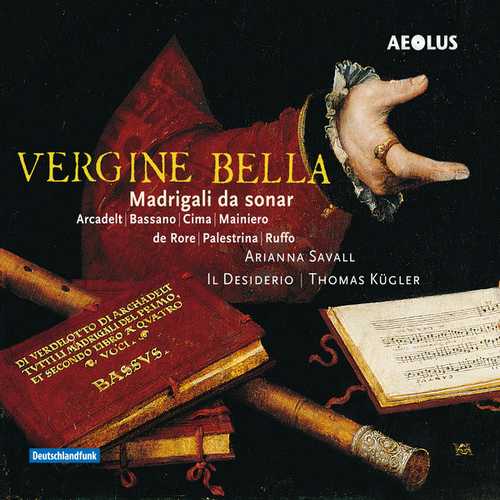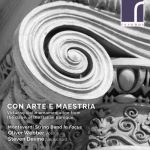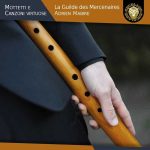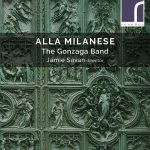
Performer: Arianna Savall, Il Desiderio
Conductor: Thomas Kügler
Format: FLAC (tracks)
Label: Aeolus
Release: 2008/2020
Size: 1.12 GB
Recovery: +3%
Scan: yes
Giovanni Pierluigi da Palestrina:
01. Vestiva i colli, prima e seconda parte
02. Vestiva i colli
Cipriano de Rore:
03. Non è ch’il duol mi scemi
Vincenzo Ruffo:
04. Dormendo un giorno
05. O felici occhi miei
Jacques Arcadelt:
06. O felici occhi miei (Extended Version)
07. O felici occhi miei, Recercada segonda
08. O felici
Giovanni Pierluigi da Palestrina:
09. Io son ferito
Vincenzo Ruffo:
10. El pietoso
11. El travagliato
Giorgio Mainiero:
12. Pass‘e mezzo antico
13. Saltarello
Cipriano de Rore:
14. Anchor che col partire, Girolamo dalla Casa
15. Anchor che col partire, Richardo Rogniono
Giovanni Bassano:
16. Ricercata prima
Cipriano de Rore:
17. Anchor che col partire, Richardo Rogniono (Extended Version)
18. Anchor che col partire
Giovanni Paolo Cima:
19. Sonata a Canto e basso
Cipriano de Rore:
20. Vergine bella, Orazio Bassani
Vincenzo Ruffo:
21. Vergine bella
With this new recording, we undertake a journey to an epoch of music-historical upheaval in which vocal music served as the model for instrumental music, or rather the natural human voice as the model for the artificial instrument. Whereas the debut project “Joyssance vous donneray” of Il Desiderio (with Arianna Savall, soprano, and a Renaissance flute consort with Tomas Kugler, among others) was dedicated to French chansons and their arrangements and parodies, „Vergine bella” places the Italian repertoire in the limelight, with its polyphonic madrigals of the sixteenth century (prima prattica) and the early monodic canzonas and sonatas of the seventeenth century.
Vocal traditions that (more than ever before) lastingly informed secular as well as sacred instrumental works constituted the foundation of that music, but simultaneously blazed the trail for the attainment of an independent instrumental language and style for each wind, string, keyboard, and plucked instrument.
The vocal repertoire of this epoch – the music-historical period between the “prima prattica” and “seconda prattica” (ca. 1550 to ca. 1610) – is quite diverse and deserves to be documented in a correspondingly fond manner.



